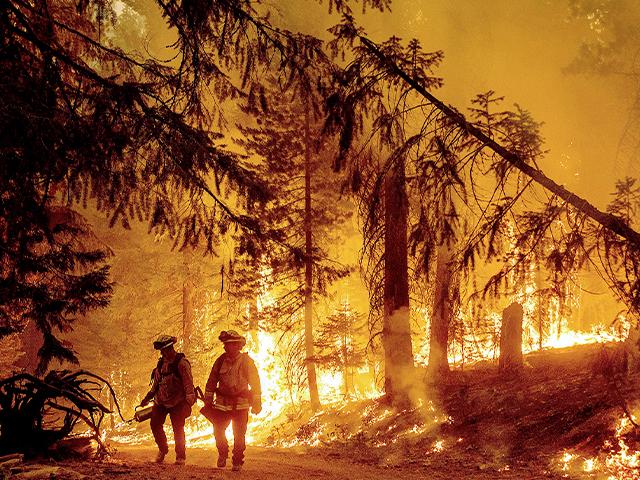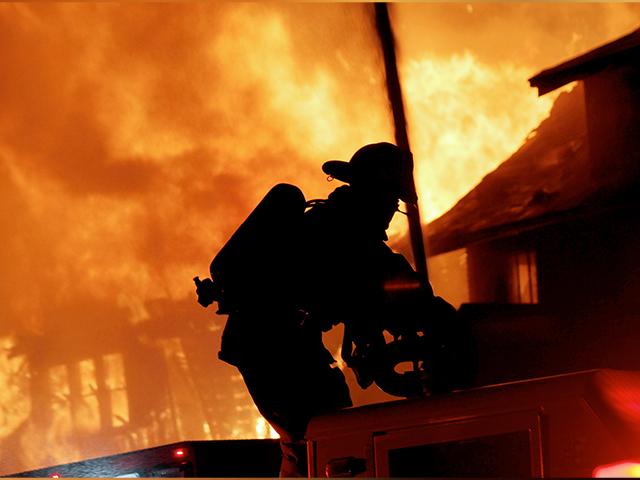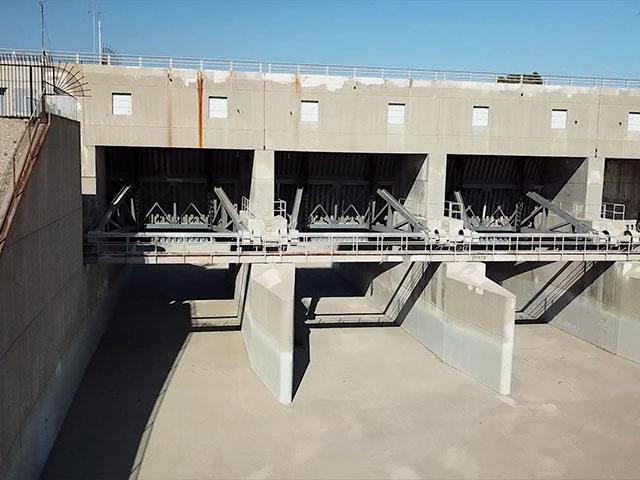An epic drought in the West has depleted the country's largest reservoir of two-thirds of its water. About 40 million people rely on Lake Mead, which is now at its lowest water level since the lake was initially filled during the construction of the Hoover Dam in the 1930s.
This month the Bureau of Reclamation, a Department of the Interior agency, plans to declare a historic shortage which will lead to cuts in the share of water that Nevada and Arizona receive.
A giant bathtub ring at Lake Mead visibly tells the story of a drought that's endured for more than 20 years.
Dr. Sean McKenna, who leads the Division of Hydrologic Sciences at the Desert Research Institute in Las Vegas, says it's an unprecedented time in the reservoir's history.
"This is serious," he said. "This is really new territory, given that all of Las Vegas and many other cities in the Southwest have really grown in that time or come into existence."
The falling levels and shrinking water supply have steadily worsened since the late 1990s. The combination of more heat, less rain, and less runoff has created a sustained drought that scientists say could be the new normal for the Southwest or more of a temporary phase.
"We hear a lot – 'is this global warming or is this just a drier hydrological cycle?'" said Doug Hendrix, a spokesman for the Bureau of Reclamation.
"I think that debate is still open," he added.
Some in the science community say the West has moved beyond drought, which is considered a temporary condition, and towards aridification, a more permanent phase of dryness and less water.
McKenna says scientists are trying to learn more about what happens to the snowpack in the Colorado Rockies that supplies water to the Colorado River and Lake Mead.
"What we think about droughts now is that it's really a lack of supply – that lack of rainfall and the atmospheric thirst," he said. "How dry is that atmosphere? How much water is that atmosphere pulling out of the ground?"
Understanding those conditions will allow regional planners to more accurately predict the water supply and Lake Mead levels going forward.
The reservoir supplies 90 percent of the water in southern Nevada and Southern Nevada Water Authority (SNWA) spokesman Bronson Mack says the region is prepared for a significant cut after the shortage is declared.
"You're looking at about nine billion gallons of water less that will be available for our community," he said.
But the SNWA is not panicking, thanks to aggressive water conservation efforts that began in 2002, when the drought started in earnest.
"We had to pivot very, very quickly and reduce our water use almost overnight," said Mack.
To achieve that, the SNWA used financial incentives to encourage homeowners to remove grass and replace it with drip-irrigated rockscapes.
It also implemented restricted watering schedules for homeowners and followed up with water patrol officers to identify water leaks or misuse.
"We can notify those property owners, help them to take corrective action," said Mack. If not, they can face a water waste fine.
Even more importantly, southern Nevada has created a system for indoor water that recycles and reuses 100 percent of it.
"We could turn on every faucet and every shower in every hotel room on the Las Vegas strip and it wouldn't increase the amount of water we deplete from the Colorado River because all of that indoor water use gets reclaimed, treated to near drinking water standards and returned back to Lake Mead," said Mack.
Last year, this extreme conservation allowed the region to use just 83 billion gallons of water, far less than its 98-billion-gallon allotment.
It also provides enough margin to absorb the expected cuts.
And water conservation has come alongside a booming population.
"Since 2002 our community has consumed 23 percent less Colorado River water," said Mack. "Yet during that exact same time frame, our population has increased by about 800,000 people so we are supplying more people with less water today than we did 20 years ago."
The work has caught the attention of neighboring states, like California. The Metropolitan Water District of Southern California is partnering with the SNWA in a water recycling project that could potentially serve more than half a million homes.
Still, southern Nevada is well aware that there's concern for a region that's rapidly growing and watching its chief water supply diminish.
It's why a number of western states are calling on Congress to invest up to $1 billion in federal dollars to better understand the drought and manage the critical water supply for some of the country's driest states.
Did you know?
God is everywhere—even in the news. That’s why we view every news story through the lens of faith. We are committed to delivering quality independent Christian journalism you can trust. But it takes a lot of hard work, time, and money to do what we do. Help us continue to be a voice for truth in the media by supporting CBN News for as little as $1.











 Support CBN News
Support CBN News










